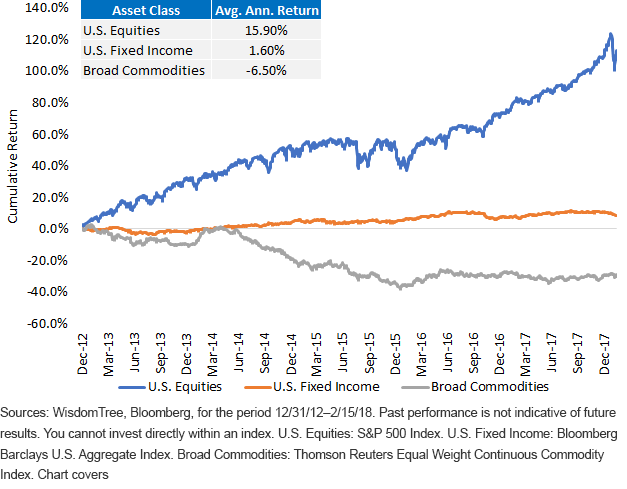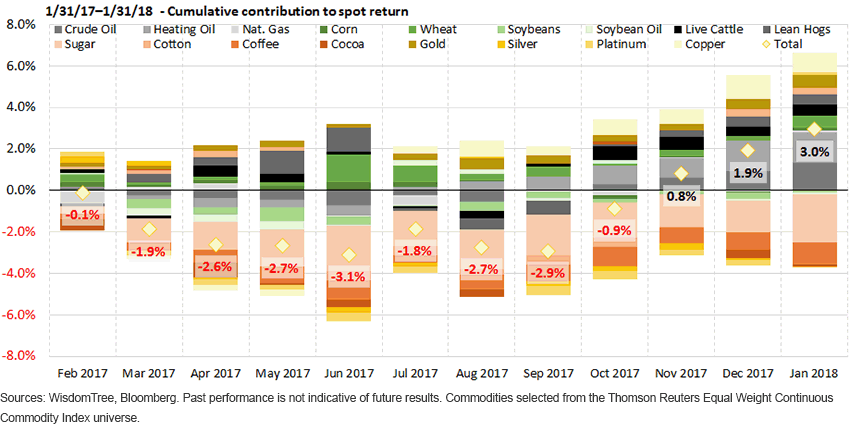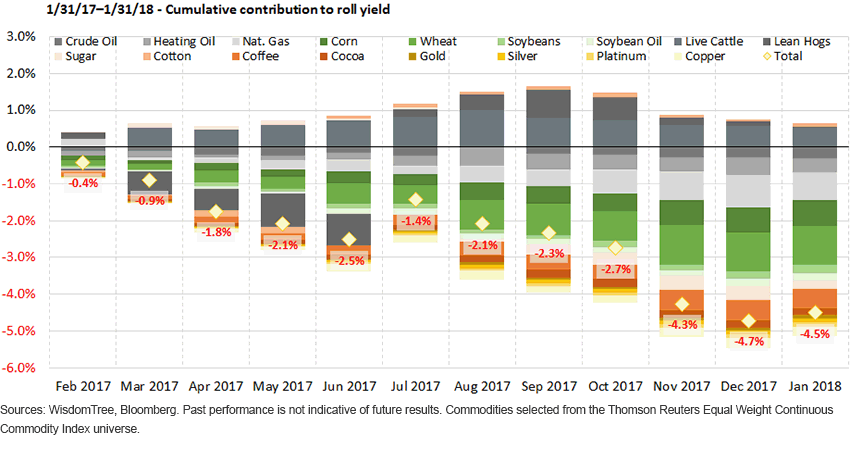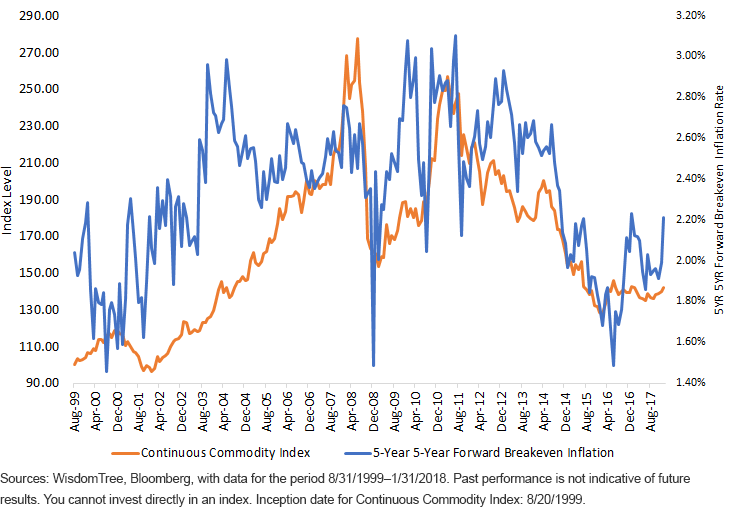Will You Miss The Commodity Comeback?
Do Commodities Have a Place in a Portfolio?
This is an interesting question in today’s environment. Those of us who have read various finance textbooks that include sections on the benefits of things like “asset allocation” and “diversification” would, almost without thinking, say “yes.”
But if we look at the reality of what market participants have experienced in the past five years, we then recognize that, behaviorally, what has been practiced may look quite different.
U.S. Equities Delivered Very Strong Returns, while Broad Commodities Ran into the Wind

- With some small exceptions in mid- to late 2015 and early 2016, U.S. equities have moved inexorably upward, exhibiting, at least until February 2018, historically low volatility. 15.90% average annual returns for about five years is a strong result.
- For the better part of this five-year period, interest rates have remained at or near historic lows, accounting for the low returns in U.S. fixed income, but notably, this asset class was also positive and would have dampened equity volatility within a broader portfolio.
- Broad commodities, on the other hand, lost almost a third of their value on a cumulative basis, or equivalently -6.5% per year.
What those with exposure to commodities have seen in the past five years has been a money-losing proposition, while their U.S. equity portfolios have had stellar returns.
Shifting Drivers of Commodity Strategy Returns
Taking a step back, it is first important to understand what factors have caused such horrible returns in commodities, because either these drivers remain powerful headwinds (and returns suffer) or they are about to shift (leading to better returns to come).
1. Collateral: In commodity strategies that utilize futures contracts to generate their commodity exposure, one component of their returns comes from the exposure of the collateral for those contracts, typically short-term Treasuries. The U.S. Federal Reserve (Fed) has embarked on a path of raising its policy rate, thereby raising collateral returns for commodity strategies from near-zero levels.
2. Spot: These are the prices of the actual commodities that are reported on a daily basis—and in many cases, this is the component of returns that commodity investors may think that they are going to receive. Because commodities tend to be priced in U.S. dollars and the U.S. dollar has been trending more toward weakness than strength, an important headwind may be shifting, allowing spot prices to rise.
3. Roll: When futures contracts are used to generate exposure to commodities, at certain times the strategy must shift from one expiring contract into a new contract—not a cost-free exercise. If the prices of commodities in futures markets are higher and rising relative to current spot prices, the impact of this “roll yield” will be negative (contango); conversely, if the prices of commodities in futures markets are lower and falling relative to current spot prices, then the impact of this component of return will be positive (backwardation).
Over Last Year, Spot Prices Began to Rise
(Click on image to enlarge)

- One of the most important trends—signified by the larger and larger positive proportion of the gray colors—has been the rising of energy commodity spot prices. In fact, on a spot basis only the soft commodities have struggled over this period.
Fairly Recently, Roll Yields Have Stabilized
(Click on image to enlarge)

- While roll yields were still negative over the past year, we have begun to see stabilization, particularly in the green (grains) and gray (energy) areas, which contribute the most to the roll yield. If roll yields in energy and grains are truly becoming less negative, this will be an important factor to monitor for broad commodity investors.
While a “less negative” roll yield might not seem all that exciting, if we place it into context where we would estimate that the impact on the return of the Thomson Reuters Equal Weight Continuous Commodity Index was more than -50% cumulatively over the past 10 years,1 a less-negative picture could look more like an important development.
Connecting Commodity Price Behavior to Other Macroeconomic Factors
Now, many people may be asking what other variables they can watch in order to indicate how commodities may perform. It is natural to look at how markets are pricing inflation expectations, and one measure there is the 5-Year 5-Year Forward Breakeven Inflation Rate that the U.S. Federal Reserve often uses.
Indicated a Close Relationship with Expected Inflation

We know that the U.S. Federal Reserve has embarked on a path of raising interest rates and normalizing the size of its balance sheet. Inflation expectations of late have, in fact, ticked up. Historically, commodities have been an interesting “inflation hedge” type of investment. We know worrying about inflation has not been fashionable for the last five years—and there really hasn’t been significant inflation to speak of. Going forward, we think it is important to consider that inflation may not be nonexistent forever and that certain pieces of an asset allocation that may have lain dormant may yet again be awakening.
1Sources: WisdomTree, Bloomberg, with data measured for the period 1/31/2008–1/31/2018.
Disclaimer: Investors should carefully consider the investment objectives, risks, charges and expenses of the Funds before investing. U.S. investors only: To obtain a prospectus containing this ...
more


